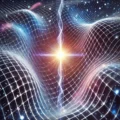American Theoretical Physicist
Introduction
Leonard Susskind (1940-present) is a leading theoretical physicist renowned for his foundational contributions to string theory, quantum field theory, and quantum gravity. Often referred to as one of the “fathers of string theory,” Susskind has played a critical role in reshaping modern physics’ understanding of the fundamental structure of reality. He is a prolific author, influential lecturer, and prominent public advocate for scientific reasoning and education.
Early Life and Education
Born in 1940 in the South Bronx, New York City, Susskind came from a working-class background. Originally trained as a plumber in his father’s business, he developed a passion for physics and pursued formal studies. He earned his B.S. in physics from the City College of New York in 1962 and completed his Ph.D. at Cornell University in 1965 under Peter A. Carruthers.
Contributions
Susskind’s scientific work spans multiple disciplines and is characterized by innovative, boundary-challenging thinking:
- String Theory Pioneer: Susskind was one of the first physicists to propose the string-theoretic interpretation of hadronic physics in the early 1970s. He contributed to what became known as bosonic string theory and later extended these ideas toward the development of superstring theory as a candidate for a unified theory of all fundamental interactions.
- Holographic Principle: Alongside Gerard ’t Hooft, Susskind developed the holographic principle, a profound proposal suggesting that all the information contained in a volume of space can be represented on the boundary of that space. This concept underpins the AdS/CFT correspondence and has deeply influenced approaches to quantum gravity and black hole thermodynamics.
- Black Hole Information Paradox: Alongside Gerard ’t Hooft, Susskind developed the holographic principle, a profound proposal suggesting that all the information contained in a volume of space can be represented on the boundary of that space. This concept underpins the AdS/CFT correspondence and has deeply influenced approaches to quantum gravity and black hole thermodynamics.
- Black Hole Information Paradox: He was instrumental in addressing the black hole information paradox posed by Stephen Hawking. His advocacy for black hole complementarity and his opposition to information loss helped stimulate major developments in quantum gravity.
- Multiverse and Landscape of String Theory: Susskind supported the idea of a multiverse arising from the string theory “landscape” of possible vacua. His work frames the cosmological constant problem in anthropic terms, suggesting that many universes exist with varying physical constants.
- Quantum Information and Spacetime Emergence: In recent decades, Susskind has explored the relationship between quantum information theory and the emergence of spacetime geometry. His research suggests that entanglement, complexity, and information flow are central to the fabric of reality—ideas that have inspired many efforts to unify quantum mechanics and general relativity.
- Public Science Education: Susskind is widely known for his accessible Stanford lectures on modern physics, freely available online. His Theoretical Minimum book series brings complex theoretical concepts to a lay audience with mathematical rigor.
Vision
Susskind’s overarching vision is that information, rather than matter or energy alone, lies at the heart of physical law. He envisions a universe where geometry emerges from entanglement and where space and time are not fundamental, but emergent from more primitive quantum processes. He has repeatedly emphasized that energy reconfigures at the speed of light, suggesting a deep connection between field dynamics, causality, and the structure of spacetime.
Legacy
Leonard Susskind’s legacy is twofold: foundational scientific contributions that have shaped modern theoretical physics, and an enduring impact on public scientific literacy. His work on the holographic principle, string theory, and quantum information has redefined fundamental questions about the nature of reality. Through both rigorous scholarship and accessible teaching, Susskind has built intellectual bridges from the deepest corners of high-energy physics to the wider scientific community.
